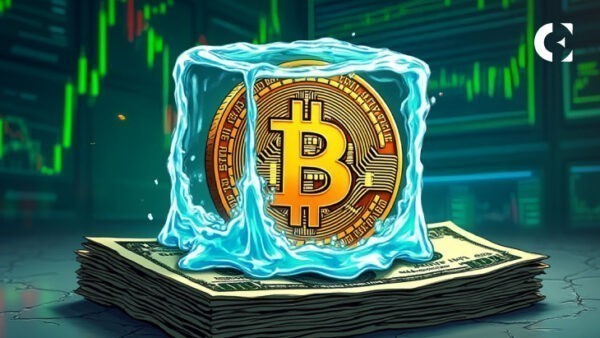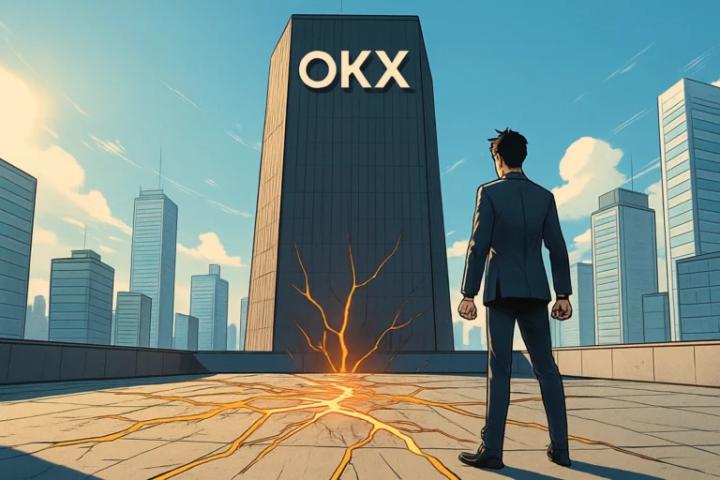Index fund managers mechanically buy COIN, they don't care about decentralization ideals, only caring about quarterly rebalancing rules

On May 19, 2025, 30 seconds before the New York Stock Exchange opening. The S&P 500 index fund trading terminals flashed red orders - billions of dollars of funds surged into Coinbase (COIN) stock pool. Fund managers typed expressionlessly, they don't care about Bitcoin's philosophical ideals, don't understand blockchain's technological revolution, and have never even owned a wallet address. But they know one thing: index rules require them to hold Coinbase, as it has now become a newcomer to the S&P 500. Wall Street's capital machine, thus silently slipped a halter onto the neck of crypto freedom.
1. The Path to Surrender: From Regulatory Purgatory to Financial Sanctuary
Coinbase's compliance counterattack is a tearful epic. Three years ago, the company was struggling to survive in the SEC's litigation storm. In June 2023, the SEC filed a lawsuit with 13 charges of violating federal securities laws, accusing it of trading "unregistered securities", with CEO Brian Armstrong angrily denouncing on social media: "We're ready to go to court!"
A dramatic turning point unfolded in 2025. In February, the SEC suddenly withdrew the lawsuit, with a crypto-friendly lawyer appointed by the Trump administration taking charge of the SEC, and the regulatory wind turning 180 degrees. Three months later, Coinbase acquired derivatives giant Deribit for $2.9 billion, controlling 70% of global Bitcoin options open interest. When the S&P 500 doors opened on May 19, Coinbase had transformed from a regulatory outcast to a financial aristocrat.
2. Capital Dark War: Passive Fund Reconstruction Equation
According to Oppenheimer analysts' calculations, over $15 trillion in index funds are forced to establish positions, with short-term passive buying demand reaching $9 billion. More far-reaching impacts surge in the undercurrent:
2.69 billion US retirement fund holders "unconsciously hold crypto" through 401K accounts, 5 million teachers become indirect participants in the crypto economy; stock price volatility logic reconstruction: passive allocation forms a buffer pad, partially hedging crypto market's violent fluctuations; Wall Street's pricing power expansion: after acquiring Deribit, Coinbase controls the Bitcoin options market, with capital penetrating to the core of crypto asset pricing;
This forced binding is changing market behavior. Robinhood data shows COIN search volume surged 300%, but only 12% of users understand its business nature. When ordinary people's retirement accounts are linked to COIN stock prices, the crypto market's free volatility characteristics are being tamed by Wall Street's stable demand.
3. Twilight of Freedom: Institutional Survival of Crypto Spirit
The crypto community once cheered Coinbase's inclusion in the S&P 500, but the keen have already sensed a crisis. When Michael Saylor celebrated on X that this is a "important milestone for Bitcoin", he omitted the implicit second half: Bitcoin's financialization is essentially traditional capital's absorption.
Coinbase's S&P 500 inclusion bullish and bearish game landscape
Bullish logic chain: regulatory pardon → index inclusion → institutional holdings → liquidity premium → industry ETF acceleration
Bearish warning line: compliance costs → innovation suppression → user loss → valuation decoupling from crypto market → Wall Street manipulation intensifies

The real threat is at the value level. When the "do no evil" crypto spirit encounters quarterly report pressure, Coinbase begins delisting anonymous coins and restricting DeFi access. Acquiring Deribit essentially means using centralized exchange logic to take over the derivatives market, which is contrary to Satoshi Nakamoto's vision of a peer-to-peer electronic cash system







